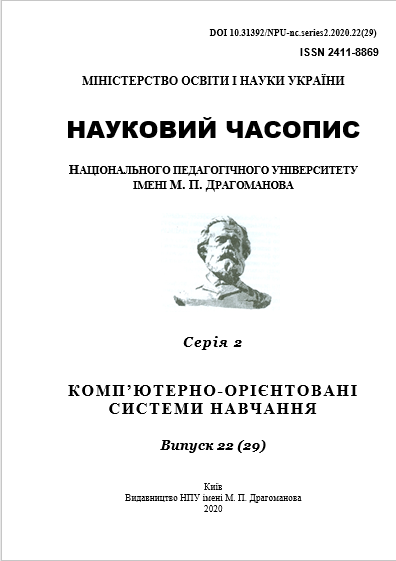WAYS TO SOLVE CURRENT PROBLEMS OF DISTANCE LEARNING
DOI:
https://doi.org/10.31392/NPU-nc.series2.2020.22(29).17Keywords:
distance learning, blended learning, effective communication, synchronous learning, asynchronous learning, teacher trainingAbstract
This article is devoted to analysis of problems of distance forms of education introduced in modern methods of higher and general education. Education in universities and secondary schools has a number of differences due to differences in the methods of teaching children and youth of different ages, but spotted disadvantages of distance learning have been similar. This is especially important during the training of future teachers in pedagogical universities, when students in training at the pedagogical universities gain practical usage experience of technologies, which can then be introduced in their professional activities, i.e., during the teaching process in secondary schools. Thus, we draw a parallel between the training of students at pedagogical universities and students in schools.
The aim of the work is to form general approaches to the training of future teachers in the field of modern information technologies usage in the teaching process. The paper provides examples of information technology usage for education over the past 15 years and provides conclusions on improving the effectiveness of learning how to use modern information and communication tools that are constantly changing (and can be modified over the time or even completely disappear).
Those results obtained during many years of work, can be used in the preparation of students at pedagogical universities. Particular attention is paid to the training of computer science teachers. The results of experimental usage of distance learning and effective communication policies are based on the experience of working with students and staff of the Department of Applied Mathematics and Informatics of the State Institution "South Ukrainian National Pedagogical University named after K.D. Ushinsky" and with students of Odessa secondary school № 73 of I-III level of accreditation. In the article we also pay attention to training implementation features specific to synchronous and asynchronous education forms (namely, synchronous training and asynchronous training).

